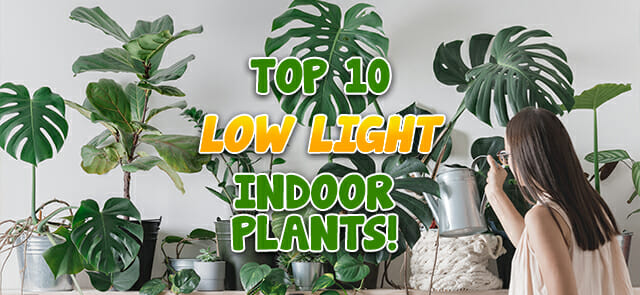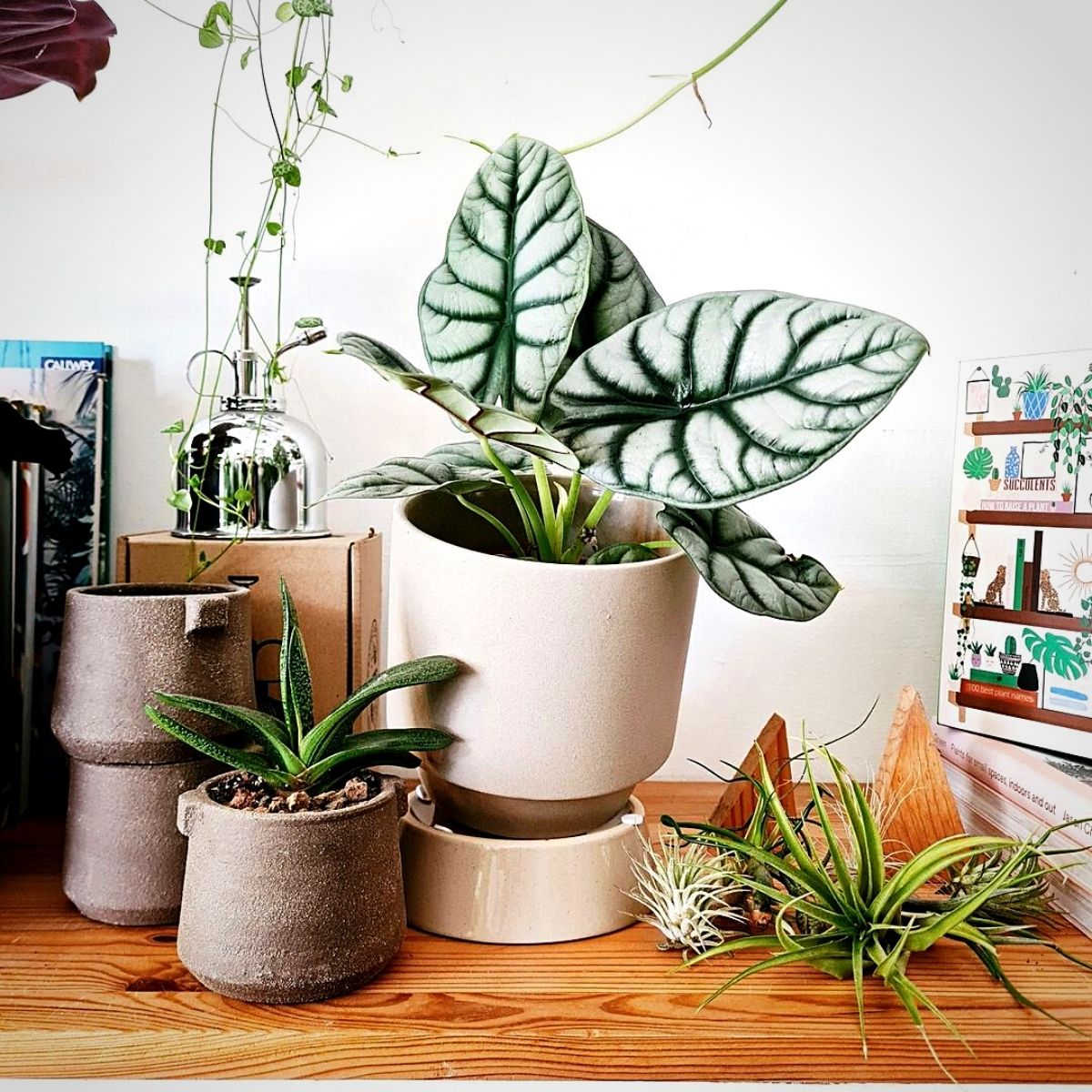Enhance Your Home Décor with the Best Low-Light Indoor Plants
Enhance Your Home Décor with the Best Low-Light Indoor Plants
Blog Article
Discover the most effective Low-Light Indoor Plants for Enhancing Your Home Decoration
Incorporating low-light interior plants into your home décor can considerably improve both appearances and atmosphere, particularly precede that do not have abundant natural light. Ranges such as the Serpent Plant and ZZ Plant not only bring life to lower corners yet also add to improved air high quality and overall well-being. Recognizing the special attributes and treatment requirements of these plants can bring about a more unified living environment. As we check out the top selections and their imaginative applications, one might wonder just how these options can change your space right into a flourishing refuge.

Why Pick Low-Light Plants
Why go with low-light plants in your interior rooms? The contemporary living environment frequently offers difficulties such as limited all-natural light, making it difficult for conventional houseplants to thrive. Low-light plants are particularly adapted to endure and grow in these problems, offering a viable remedy for individuals seeking to enhance their interior spaces without the added tension of keeping more light-demanding flora.
Along with their strength, low-light plants contribute significantly to the aesthetics of a space. Their diverse series of shades, sizes, and forms allows for one-of-a-kind indoor style opportunities, creating inviting and lively atmospheres. Interior plants are recognized for their air-purifying top qualities, enhancing interior air top quality by launching and filtering system toxins oxygen, which can improve general wellness.
Low-light plants also require very little upkeep, making them especially interesting busy people or those brand-new to horticulture. Their flexibility permits for placement in various environments, from office to dimly lit edges of the home. By picking low-light plants, you can enjoy the benefits of greenery without the restraints that typically come with traditional gardening, ultimately fostering a much healthier and much more visually enticing interior setting.
Leading Low-Light Indoor Plants
For those seeking to improve their indoor areas with plant that prospers in low-light conditions, a number of plant options stand out for their resilience and aesthetic charm. The Serpent Plant (Sansevieria trifasciata) is a preferred selection, understood for its upright, sword-like leaves and capability to endure overlook. This sturdy plant can make it through in poorly lit locations while boosting interior air top quality.
An additional excellent option is the Pothos (Epipremnum aureum), defined by its heart-shaped leaves and routing creeping plants. When positioned on shelves or hanging baskets., Pothos is not just versatile to low light but also supplies a striking aesthetic contrast.
The ZZ Plant (Zamioculcas zamiifolia) is similarly outstanding, boasting shiny, dark green leaves that can cheer up any corner. Its drought resistance makes it excellent for busy property owners.
Treatment Tips for Low-Light Plants
Exactly how can you ensure that your low-light indoor plants flourish despite restricted sunshine? Initially, pick the ideal potting mix that supplies excellent drainage while preserving moisture. A well-aerated dirt, such as a mix of potting soil and perlite, can aid stop root rot.
Watering is crucial; low-light plants usually require much less regular watering compared to their sun-loving counterparts. Always examine the top inch of the dirt-- if it feels dry, it's time to water. Beware of overwatering, as this can lead to fungal issues and origin decay.
Fertilizing low-light plants need to be done moderately - Best low-light indoor plants. Make use of a well balanced, water-soluble fertilizer throughout the growing period, yet decrease or remove fertilization in the inactive months
Furthermore, dust can build up on fallen leaves, hindering photosynthesis. Delicately wipe the fallen leaves with a wet towel to maintain them tidy.
Last but not least, observe your plants very closely. Indicators of distress, such as yellowing leaves or leggy growth, can indicate that your plant needs modifications in care (Best low-light indoor plants). By adhering to these treatment suggestions, your low-light interior plants can prosper, including charm and vitality to your home
Imaginative Ways to Display Plants
Elevating the visual allure of your indoor space can be achieved by thoughtfully displaying your low-light plants in creative means. Think about making use of upright room to your advantage; wall-mounted shelves can showcase routing plants over here like pothos or philodendron, adding lushness while conserving flooring space. Conversely, utilize plant stands of differing elevations to develop visual passion and depth, drawing the eye up.
Hanging planters are another superb alternative, providing a significant result when put on hold from the ceiling or hooks. Macramé hangers can present appearance and bohemian style, while contemporary ceramic hangers can fit a minimal aesthetic. For an extra innovative strategy, repurpose unique containers such as vintage teacups or glass jars, which can add personality to your display.
Grouping plants in collections is additionally efficient; usage varying pot dimensions and shades to develop a cohesive look. This technique not only improves aesthetic impact yet additionally offers an all-natural environment feeling - Best low-light indoor plants. Finally, consider placing plants near light resources like home windows or lights to maximize their growth and showcase their vibrant foliage, therefore enhancing the general atmosphere of your indoor atmosphere.
Advantages of Indoor Greenery
Many researches have actually demonstrated that including indoor greenery right into your home uses a wide variety of advantages, improving both psychological and physical well-being. Among one of the most considerable advantages of interior plants is their capacity to improve air high quality. Plants soak up carbon dioxide and release oxygen, producing a much healthier atmosphere while also straining hazardous toxic substances, therefore advertising breathing health.
Additionally, the visibility of greenery has been connected to lowered anxiety degrees. Study suggests that communicating with plants can lower cortisol degrees, which are connected with stress and anxiety. This calming effect can bring about boosted mood and boosted efficiency, making interior plants an ideal addition to work areas.
Additionally, indoor plant can enhance cognitive feature. Researches recommend that settings enriched with look at here now plants can lead to boosted focus, creative thinking, and overall psychological clarity. The visual charm of indoor plants likewise adds to an extra welcoming and positive atmosphere, positively affecting social communications and general satisfaction within an area.
Conclusion

Incorporating low-light interior plants into your home decor can substantially improve both appearances and ambience, especially in spaces that lack redirected here abundant natural light. Ranges such as the Serpent Plant and ZZ Plant not just bring life to lower corners but additionally add to boosted air quality and overall health. Interior plants are understood for their air-purifying qualities, boosting interior air top quality by filtering toxins and releasing oxygen, which can improve total well-being.
For those looking for to boost their interior rooms with greenery that grows in low-light problems, several plant choices stand out for their strength and visual appeal. These resistant plants, such as the Snake Plant and ZZ Plant, prosper in dark conditions and call for very little maintenance, making them ideal for different way of lives.
Report this page